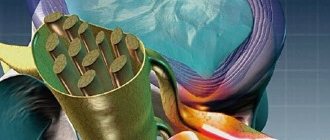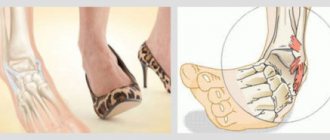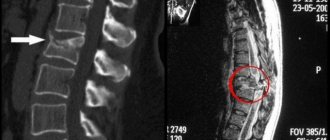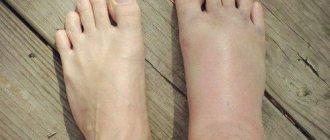Manual labor is accompanied by injuries and pain. From manufacturing to agriculture, these industries have their share of injuries.
Once trauma occurs, the age-old question arises. Warm or cold? When it comes to first aid for pain, there is a lot of confusion surrounding the issue. Hot and cold compresses can help with pain and injury recovery. Each method has its own strengths and weaknesses.
Hot and cold applications have particular uses when it comes to pain, acute injuries and chronic discomfort. However, if these remedies are used incorrectly, they can do more harm than good.
This article offers some basic guidelines on how to use heat and cold when it comes to reducing pain and inflammation.
Indications for using a compress for bruises
Compresses are recommended only for minor bruises. If the integrity of the skin is compromised, self-medication is not the best option. Infection can enter the wound and lead to serious complications.
Injuries to the joints, chest and head are dangerous. This can have long-term consequences. That is why it is worth visiting a doctor if you are concerned about your general health and any unpleasant, unusual sensations.
The main indications for compresses against bruises at home are:
- Minor changes with the formation of abrasions.
- Localized bruising.
- Multiple soft tissue hematomas.
To effectively get rid of bruises and contusions, it is necessary to apply a compress immediately after the injury.
Contraindications to their use are local or general increase in body temperature and the presence of wounds on the skin. The presence of severe throbbing pain is also a contraindication.
If the injuries are serious, it is necessary to distinguish them from serious pathology. Internal hemorrhages are possible with abdominal contusions. Their danger is that a person may feel good for several days. Severe chest trauma can lead to rib fractures. If in doubt, consult a specialist to clarify the diagnosis. In case of severe hematomas as a result of severe bruises, a bandage cannot always help. In some cases, treatment with compresses is not enough. For extensive bruises, physiotherapeutic procedures are recommended as additional treatment.
Compresses should not be used for head injuries with bruises around both eyes. This is a possible symptom of a concussion. In this case, an urgent additional examination and consultation with a neurologist is necessary.
Symptoms of chest contusion
The main signs of a chest contusion are:
- dull pain in the chest, which appears immediately after injury and is especially strongly felt when coughing, taking a deep breath, bending over, or other body movements;
- bruising in the injured area (there may not be a hematoma, but the risk of organ damage remains);
- swelling (increase in volume) of soft tissues.
Damage to the lungs due to a contusion of the sternum manifests itself in the following:
- superficial pain may be accompanied by deeper pain;
- blood pressure decreases, pulse increases;
- the patient experiences shortness of breath and feels short of air;
- lips turn blue, forehead is covered with perspiration;
- the patient may cough up blood.
- heart rhythm disorder
Heart damage due to sternum injury may include:
- angina pectoris - characterized by pain in the heart area;
- infarction-like - the patient experiences shortness of breath, agitation, and fever.
Types of compresses
Therapeutic bandages are divided into warming, cold, alcohol and medicinal. They can be dry or wet. Dry heat is used to cover the injured area from contamination. All other lotions are wet.
Warm compress for bruises
They are recommended to be used within two days after the injury. This compress is used as a dissolving agent. It cannot be used for allergic dermatitis, psoriasis and tuberculosis.
Application technique:
- Take a clean napkin, not necessarily sterile. Fold it according to the size of the bruise.
- Moisten generously with warm water and squeeze.
- Apply to skin.
- Place a piece of plastic wrap on top.
- Then cover with a layer of cotton wool. It should completely cover the membrane.
- Secure the wool fabric.
This compress should be kept for 6-8 hours. It is most convenient to wear it at night. It should not be used for concomitant acute respiratory infections and systemic fever. In this case, you should choose other options.
What's the secret?
1. High content of vitamin C, which is responsible for the accelerated regeneration of damaged cells, and is also responsible for inhibiting the processes that generate free radicals. In simple words, it does not allow a bruise or hematoma to “spread” over the skin.
2. Anti-inflammatory vitamin B1 soothes irritated tissues, and B6 will prevent fungal infections from settling in an open wound.
3. Starch of plant origin is actively used in medicine as a lifting agent, hence the rapid healing and smoothing of the dermis.
Note. For cosmetologists, the content of other “B” (niacin, pantothenic acid), “E” (tocopherol, responsible for skin elasticity) and microelements (for example, iron, potassium) is also important. When treating bruises, this is the last thing a person thinks about, but taken together, the remedy has a positive therapeutic effect.
Cold compress for bruises and contusions
This is the best option. Cold causes capillaries to constrict and reduces pain. For minor injuries, one application is sufficient. It is good for bruises in the nose and prevents nosebleeds.
Application technique:
- A piece of bandage soaked in cold water.
- Apply to the bruise area.
- Keep it for half an hour. Replace every 5-10 minutes as it cools. Do not cover the countertop with anything.
Cold compress for bruises
Another alternative to a cold pack is to use ice. In an emergency, you can put a piece of ice from the refrigerator. It is better to put it on a clean napkin or towel. If there is no ice, you can use any frozen food. They also need to be changed every 10 minutes. These dressings should be used within two days after the injury.
Vodka compress for bruises
Refers to warm compresses. It should be used with caution in children and those with cardiovascular diseases.
If you are using 96% rubbing alcohol, you will dilute it with water in a 1:4 ratio. Vodka is usually diluted halfway with water. Pure alcohol may cause skin burns.
How to apply:
- Moisten the gauze with vodka. It should be cut to the size of the injury.
- The skin is pre-lubricated with any oil cream.
- A layer of polyethylene and cotton wool is applied.
- Secure with a bandage.
This compress should not be stored for longer than 30-40 minutes. Vodka compress for bruises reduces signs of inflammation and improves blood circulation.
With medications
There is a wide range of pharmaceuticals available to treat minor injuries.
Dressings with dimethoxide, magnesia or Vishnevsky ointment turned out to be good. Anti-inflammatory gels for compresses (ketonal, dolobene) also bring good results. It is possible to use ointments that restore the permeability of the vascular wall (heparin, lyoton). Such compresses reduce thrombosis and are good for facial bruises. If such a compress is applied in a timely manner, a bruise may not even form.
Compressing a bruise with medications
The method of administration is the same for all drugs except dimethoxide. It consists of the following elements:
- The napkin is moistened with the solution. If gels or ointments are used, they can be applied directly to the skin.
- The next layer will be polyethylene foil or cellophane.
- Then everything is fixed in several layers with a bandage. It can be stored for several hours.
If dimethoxide is used, it is diluted with water in a ratio of 1: 3. Apply for 30 minutes. Failure to comply with this rule may result in skin burns. These compresses are especially good for bruised joints. They have an anti-inflammatory effect and reduce swelling.
Effective folk recipes for compresses for bruises
Sometimes it happens that it is not possible to go to the pharmacy, and the bruise needs to be treated urgently.
Then you can resort to traditional medicine. Just let's not forget that they can only be used the next day after the injury. There are many such methods, but the most effective are the following:
- Cabbage compress.
Take a leaf of white cabbage. It should be rinsed well under running water. Then mash with a hammer until the juice appears. Apply to the sore spot. Secure with a bandage. This compress is applied for several hours. When the sheet is dry, replace it with a new one. Repeat several times. Sometimes a few days of using such balms is enough. The bruise goes away.
- Onion compress with honey
Take the bow. Grind to pulp in a meat grinder. Add 1 tablespoon of honey. Mix well. Place the mixture on a napkin. Then it is applied to the sore spot. After 1 hour, it should be removed and the bruise should be lubricated with any cream.
Compress for bruises with onions and honey - one of the popular options
- Bandage with sycamore.
Flat leaves are poured with boiling water. Then make a compress out of them. Can be used whole or finely chopped with a knife. Keep for several hours. Then replace it with a new one.
- Salt compresses for bruises.
A strong saline solution is prepared. Take 1 tablespoon of salt for 1/2 tablespoon of warm water and mix. Moisten the bandage with this liquid and apply a compress similar to a warming one. We put cellophane on top, then cotton wool. Bandage for 2-3 hours. Then repeat the procedure. Salt compresses for bruises normalize blood circulation, reduce swelling and pain.
- Rinse with apple cider vinegar, iodine and salt.
For 1/2 tablespoon of apple cider vinegar, take 4-5 drops of iodine and 1 tablespoon of honey. The fleshy mass thus formed is applied to a napkin. It is then attached to the site of injury. This mixture should be stored for no more than one hour.
Types of compresses depending on the location of the bruise
For minor bruises, treatment can be carried out independently. Depending on the location of the injury, there are specific features in applying compresses. If your limbs are injured, place your arm or leg on a pillow. An elevated position will reduce the likelihood of subcutaneous hemorrhage. If the skin of the back or abdomen is injured, it is more convenient to use compresses in a sitting position.
Compress for a bruised leg
A bruised leg is the most common injury a person can suffer. This can be caused by hitting furniture, playing with a child, or careless cleaning of the house. When such an injury occurs, it is helpful to first determine the extent of the injury. Sometimes a bruise may be accompanied by a fracture or dislocation. This may be indicated by increased pain and visible deformation of the limb. If there is no such suspicion and the injury is minor, you can use home compresses.
In such cases, cold lotion helps for the first few minutes. You can use any cold object that you have on hand. After a few hours, an ointment or gel bandage should be applied. You can also apply a cold salt compress to bruises on your legs. In this case, the salt should be placed in the refrigerator. and then apply to the sore spot for 15 minutes.
If your fingers are injured, there is no need to wrap lotion on them. You can simply wrap your finger in a damp cloth or ointment.
The feet can be a common site for hematomas to form when a limb is bruised. In this case, the easiest way is to apply a compress. Secure the bandage with an elastic bandage. Does not slip and does not restrict movement.
Compress for a bruised hand
First, apply ice to the injured area. The sooner this is done, the greater the chance of preventing the development of a hematoma. After 2 days, you can use warming or therapeutic dressings. With shoulder injuries, bruising or other injuries to the forearm are common. Before applying a compress, make sure there are no fractures or torn ligaments. If this is the case, treatment will not help. If there is severe swelling or extensive bruising, you should consult a doctor. If there is no such suspicion, a cold poultice of vodka can be used as first aid for a bruise. The cold will stop the bleeding, and the vodka will reduce swelling.
Tips for choosing a first aid method
Hazards vary from workplace to workplace. Now that the methods of applying heat and cold have been explained a little, a few tips below will help you choose the right treatment for your pain or injury.
Fresh injuries do not require heat
Applying heat to a new wound will only increase blood flow to the area. This will aggravate the injury as it increases the inflammatory process. Even for acute muscle pain, avoid heat as a fresh injury needs time to reduce inflammation first.
Cold for swelling and bruising
Fresh bruise or swelling from an acute injury? Ice is the way to go when you have swelling or bruising from a recent injury. Cooling will help reduce swelling and reduce blood flow to the affected area.
Muscle pain varies
Hot and cold compresses can be a friend for muscle pain, but timing and circumstances are critical when choosing. Acute muscle pain and muscle injuries can be reduced by applying cold—especially during the first 72 hours.
Once the inflammation has subsided, you can switch to heat to speed up healing. If you are unsure, be sure to consult with your healthcare provider. Remember, heat is best used for muscle fatigue and stiffness.
Using heat or ice for pain can cause some confusion. Both products have their benefits when it comes to managing discomfort, but if used incorrectly, they can do more harm than good.
Contact us to find out what health and safety services we can provide to help your team members stay healthy and productive!











